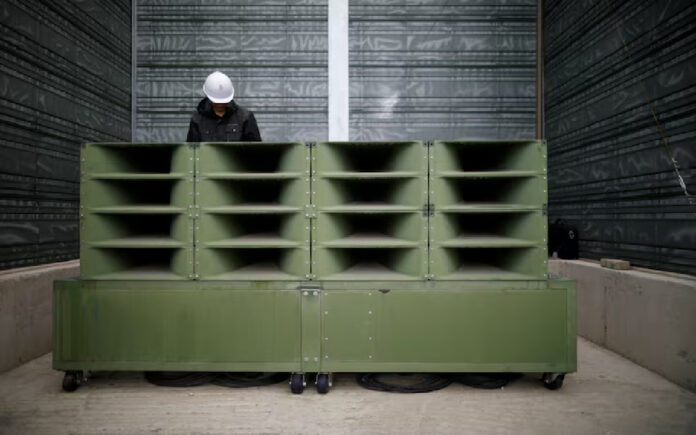Seoul: In a decisive move, South Korea announced on Sunday its intention to recommence loudspeaker broadcasts directed towards North Korea, marking the first resurgence in six years. This decision comes in response to Pyongyang’s recent balloon launches, which have resulted in the transference of waste to South Korean territory. As tensions escalate once more on the Korean peninsula, revisiting the utilization of loudspeakers underscores South Korea’s strategic response. Here are essential insights into this method of psychological warfare:
THE SETUP
The infrastructure comprises up to 24 high-power speakers, arranged in substantial stationary racks towering as tall as 6 meters (20 ft) and spanning 3 meters wide. Positioned just south of the barbed wire fence demarcating the southern perimeter of the Demilitarized Zone border, these speakers serve as pivotal tools in transmitting messages across the border.
Additionally, mobile units, mounted on trucks, offer flexibility in deployment. Operated by South Korea’s military, the speaker system can emit voice and music at maximum output, reaching distances exceeding 20 km (12.4 miles) into North Korea, effectively targeting both military personnel and civilians.
Also Read | South Korean Doctors Prepare for June 18 Strike Against Healthcare Reforms
ACHIEVEMENTS OF THE BROADCASTS
Former South Korean President Park Geun-hye, in 2016, heralded the loudspeaker broadcasts as “the most effective form of psychological warfare,” attributing them to inciting North Koreans to brave perilous journeys in pursuit of freedom in the South. Testimonies from defectors further corroborate this assertion.
Termed as the “Voice of Freedom” by South Korea’s military, these broadcasts encapsulate four overarching themes: extolling the virtues of liberal democracy, chronicling South Korea’s economic prosperity, advocating for reunification, and shedding light on the realities of North Korean society.
In a unique amalgamation, the broadcasts intersperse world news, critiques of North Korea’s political regime and its leader, alongside weather updates, with the pulsating beats of K-pop. This eclectic mix leaves a lasting impression on some North Korean defectors, challenging the perception of ideological indoctrination by showcasing music devoid of political messaging.
Also Read | British TV Presenter Michael Mosley Found Deceased on Greek Island of Symi
NORTH KOREAN RESPONSE
North Korea vehemently condemns any criticism directed towards its leader, Kim Jong Un, as an assault on his “supreme dignity.” Past broadcasts containing such critiques have elicited retaliatory measures, including artillery strikes across the border.
The prominence of loudspeaker broadcasts was acknowledged in the joint declaration signed by North Korean leader Kim Jong Un and former South Korean President Moon Jae-in during a historic peace summit in 2018. Referred to as a “hostile act,” South Korea pledged to halt operations and dismantle the speakers, as per the declaration.
North Korea’s military reportedly engaged in rudimentary countermeasures, deploying its own loudspeakers in an attempt to disrupt broadcasts aimed at its soldiers and populace. However, lacking sufficient output, these efforts failed to convey comprehensible messages from the South.



